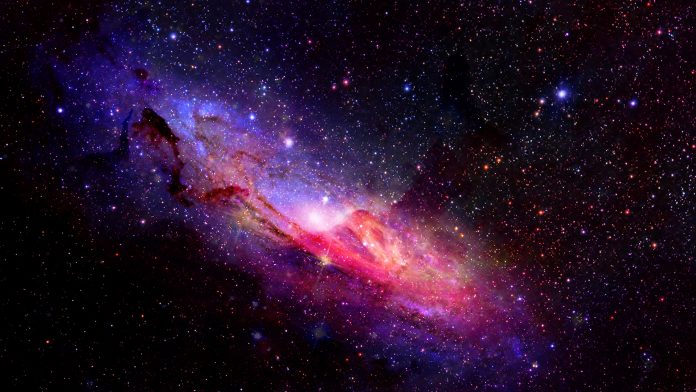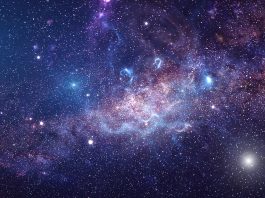Researchers have investigated the Standard Model of Cosmology in relation to the evolution of galaxies to discover flaws in its theory due to the amount of disk galaxies observed.
The Standard Model of Cosmology describes how the universe came into being, according to the view of most physicists. Researchers at the University of Bonn, in collaboration with the University of St Andrews in Scotland, and Charles University in the Czech Republic, have now studied the evolution of galaxies within this model, discovering considerable discrepancies with actual observations of numerous disk galaxies. The results have now been published in the Astrophysical Journal.
Disk galaxies
Most galaxies visible from Earth resemble a flat disk with a thickened centre. According to the Standard Model of Cosmology, however, such disks should only form very rarely. This is because in the model, every galaxy is surrounded by a halo of dark matter. This halo is invisible but exerts a strong gravitational pull on nearby galaxies due to its mass.
“That’s why we keep seeing galaxies merging with each other in the model universe,” explained Professor Dr Pavel Kroupa of the Helmholtz Institute for Radiation and Nuclear Physics at the University of Bonn. This crash has two effects, the physicist added: “First, the galaxies penetrate in the process, destroying the disk shape. Second, it reduces the angular momentum of the new galaxy created by the merger.”
Put simply, this greatly decreases its rotational speed. The rotating motion normally ensures that the centrifugal forces acting during this process causes a new disk to form. However, if the angular momentum is too small, a new disk will not form at all. Large discrepancy between prediction and reality.
The evolution of the universe
In the current study, Kroupa’s doctoral student, Moritz Haslbauer, led an international research group to investigate the evolution of the universe using the latest supercomputer simulations. The calculations are based on the Standard Model of Cosmology; they show which galaxies should have formed if this theory were correct.
The researchers then compared their results with what is currently the most accurate observational data of the real Universe visible from Earth. “Here we encountered a significant discrepancy between prediction and reality,” Haslbauer said. “There are apparently significantly more flat disk galaxies than can be explained by theory.”
However, the resolution of the simulations is limited, even on today’s supercomputers. It may therefore be that the number of disk galaxies that would form in the Standard Model of Cosmology has been underestimated. “However, even if we take this effect into account, there remains a serious difference between theory and observation that cannot be remedied”, Haslbauer added.
The MOND theory
The situation is different to the Standard Model, which dispenses with dark matter. According to the so-called MOND theory (MilgrOmiaN Dynamics), galaxies do not grow by merging with each other. Instead, they are formed from rotating gas clouds that become more and more condensed. In a MOND universe, galaxies also grow by absorbing gas from their surroundings. However, mergers of full-grown galaxies are rare in MOND.
“Our research group in Bonn and Prague has uniquely developed the methods to do calculations in this alternative theory,” explained Kroupa, who is also a member of the Transdisciplinary Research Units ‘Modelling’ and ‘Matter’ at the University of Bonn. “MOND’s predictions are consistent with what we actually see.”
However, the exact mechanisms of galaxy growth are not yet fully understood, even with MOND. Additionally, in MOND, Newton’s laws of gravity do not apply under certain circumstances, however they do need to be replaced by the correct ones. This would have far-reaching consequences for other areas of physics.
“Nevertheless, the MOND theory solves all known extragalactic cosmological problems despite being originally formulated to address galaxies only,” said Dr Indranil Banik, who was involved in this research.
“Our study proves that young physicists today still have the opportunity to make significant contributions to fundamental physics,” Kroupa concluded.









